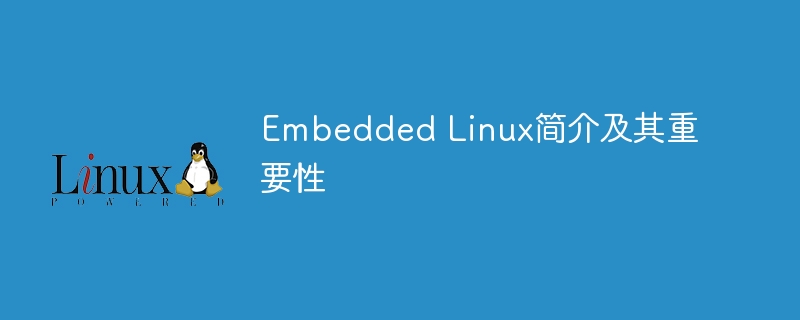

Introduction to Embedded Linux and its importance
Embedded Linux is an embedded operating system commonly used in embedded devices and embedded systems. It is a combination of the Linux kernel and some user-space tools, tailored and optimized to fit the specific needs of embedded devices.
The importance of Embedded Linux is that it provides a powerful and flexible operating system platform that can run on various types of embedded devices, such as smartphones, vehicle systems, smart home devices, and industrial controls. system etc. Embedded Linux can help developers build feature-rich and stable embedded systems to meet the needs of different industries.
Embedded Linux systems usually consist of the following parts: Linux kernel, root file system, applications and drivers. The following aspects need to be considered when developing an embedded Linux system:
The following is a simple embedded Linux sample program using a basic character device driver:
#include <linux/module.h>
#include <linux/fs.h>
#include <linux/init.h>
#include <linux/uaccess.h>
#define DEVICE_NAME "my_device"
#define BUF_SIZE 1024
static char buffer[BUF_SIZE];
static int major;
static int my_device_open(struct inode *inode, struct file *file)
{
printk(KERN_INFO "Device opened
");
return 0;
}
static int my_device_release(struct inode *inode, struct file *file)
{
printk(KERN_INFO "Device closed
");
return 0;
}
static ssize_t my_device_read(struct file *file, char *buf, size_t count, loff_t *ppos)
{
if (copy_to_user(buf, buffer, count))
{
return -EFAULT;
}
return count;
}
static ssize_t my_device_write(struct file *file, const char *buf, size_t count, loff_t *ppos)
{
if (copy_from_user(buffer, buf, count))
{
return -EFAULT;
}
return count;
}
static struct file_operations fops = {
.open = my_device_open,
.release = my_device_release,
.read = my_device_read,
.write = my_device_write,
};
static int __init my_device_init(void)
{
major = register_chrdev(0, DEVICE_NAME, &fops);
if (major < 0)
{
printk(KERN_ALERT "Failed to register device
");
return major;
}
printk(KERN_INFO "Device registered with major number %d
", major);
return 0;
}
static void __exit my_device_exit(void)
{
unregister_chrdev(major, DEVICE_NAME);
printk(KERN_INFO "Device unregistered
");
}
module_init(my_device_init);
module_exit(my_device_exit);
MODULE_LICENSE("GPL");
MODULE_AUTHOR("Your Name");
MODULE_DESCRIPTION("A simple character device driver");以上示例程序实现了一个简单的字符设备驱动程序,可以在嵌入式Linux系统中使用。开发嵌入式Linux系统需要深入了解Linux内核和用户空间工具的使用方法,同时需要考虑设备的特殊需求和性能要求,才能构建稳定、高效的嵌入式系统。Embedded Linux作为一种强大的嵌入式操作系统平台,将在未来的嵌入式系统开发中扮演越来越重要的角色。
The above is the detailed content of Introduction to Embedded Linux and why it's important. For more information, please follow other related articles on the PHP Chinese website!
 Is linux an embedded system?
Is linux an embedded system?
 What to do if the specified module cannot be found
What to do if the specified module cannot be found
 504 Gateway Time out causes and solutions
504 Gateway Time out causes and solutions
 Commonly used mysql management tools
Commonly used mysql management tools
 How to set up a secure VPS
How to set up a secure VPS
 Why do all the icons in the lower right corner of win10 show up?
Why do all the icons in the lower right corner of win10 show up?
 python development tools
python development tools
 Usage of fscanf function
Usage of fscanf function




